So you want to buy an MG ‘Y’ Type?
Written by Neil Cairns & David Pelham
So you have decided to buy a MG ‘Y’ Series “One and a Quarter Litre” sports saloon or Tourer, you have read up on all the road tests available, and the excellent books that abound on any MG show stall or shop.
You have been to a few MG shows, and have spoken to the owners. The car is what you want, and you have a good idea of the abilities, running costs, spares availability, insurance, etc. Now it is time to look at the cars for sale to find your ideal version.
The YA and YB
Shock number one will be the prices of the cars on the market. For an older MG the ‘YA’ and ‘YB’ are very cheap indeed. If you compare the almost identical ‘T’ series such as a TD, they fetch twice as much as the little MG saloon. The TF will be four times the price. All use very similar parts, but only the ‘Y’ can take four people in comfort. The ‘T’ series uses the same, or virtually identical mechanical parts.
The car has a great number of grease nipples that require attention every 1000 miles, and oil changes at every 3000 miles. Servicing an older car is quite an expense if you cannot do it yourself. Fail to service it properly and things will seize up and break. Service it properly and most of it will last for ages and ages, well beyond that of the equivalent sealed-for-life modern car part.
The MG ‘One and a Quarter Litre’ sports saloon is of its age, and the open ‘T’ series is state of the art for the times. That simply means the car is not a 1990’s sports hatch, and cannot hope to keep up with modern Motorway traffic. Under its bonnet is an engine that can date its design back to the 1920’s, though also having some very modern engineering inside it. It is an overhead-valve (OHV) unit of 1250cc giving out 46 brake-horse-power on the ‘Y’, and 54bhp on the ‘T’ series.
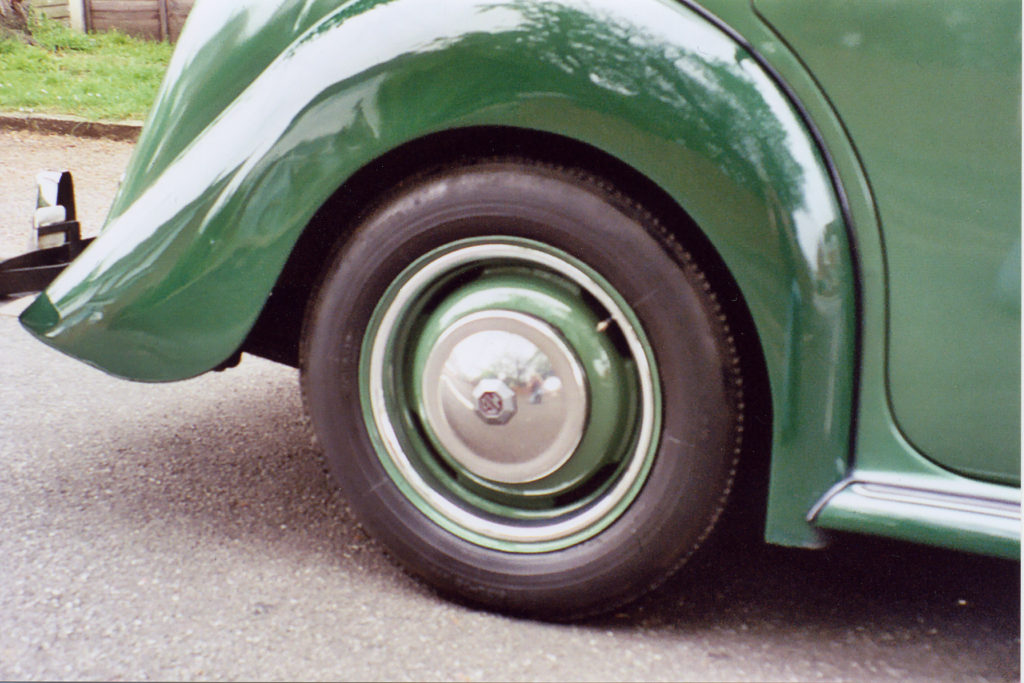
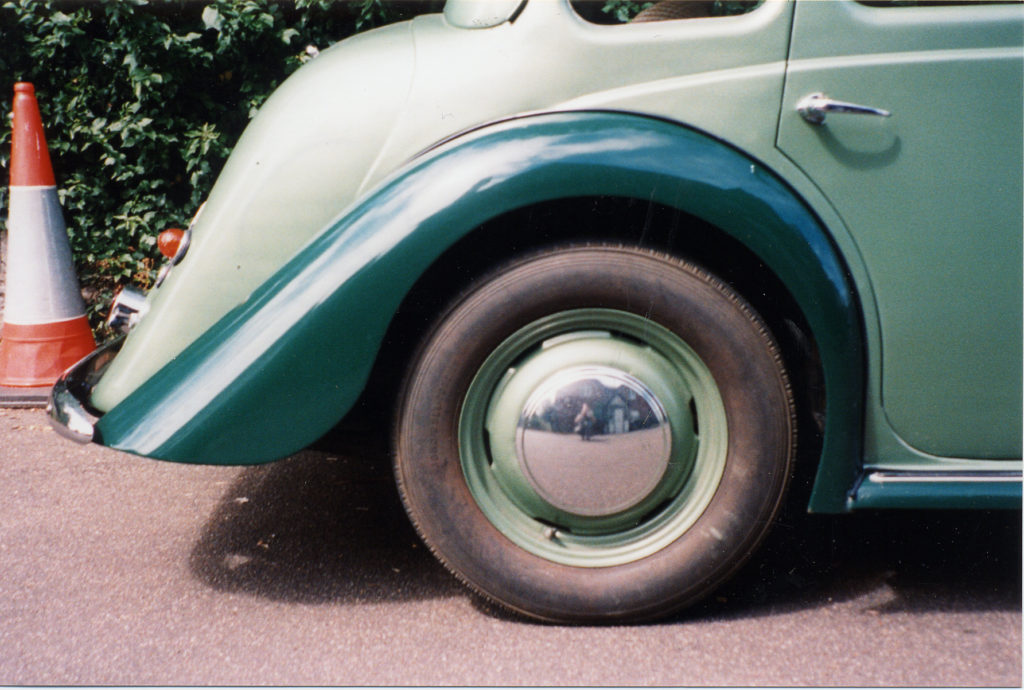
That is 1250cc pulling a car weighing almost a tonne, (21cwt,) so today the performance now seems very pedestrian. Back in 1937, when the cars were first put onto paper, the ‘Y’ to be ready for the 1939 Motor show, its 70mph max speed was very good, its specification excellent, its road holding superb. This was in comparison with other six-light, four door family saloons, of the late 1930’s. The little MG sports saloon was a VW Golf GTi of its day.
Bodywork
As a result of the ‘liberal lubrication’ by the XPAG engine, the front end of a Y Type rarely suffers from rust problems. However, the oil from the engine does not reach the rear-end, and as a consequence ‘metal worm’ can be rampant in certain areas. Areas that require particular attention and close inspection are:
- The rear end of the chassis, immediately below the spare wheel compartment
- The bottom of the spare wheel compartment
- The bottom of the boot lid
- The inner rear wheel arches where the wing bolts on to the main body tub. Look for ‘tell tale’ signs of bubbling.
- The bottom of all doors.
- The rear spring hangers, the shackled end rot as well.
- The sunroof (YA&YB) there are drain pipes from each corner, front and back; check they are clear of rotten leaves.
- Look at the wiring very carefully, by now the car should have had a new loom fitted; old wires will have had their insulation either crumble, or rot away.
- Look at the brake master-cylinder, or at least wipe it with a rag to see if it is ‘weeping’. It is located immediately beneath the brake pedal.
- The floorboards – however these are easily replaced with ‘Marine Ply’
The majority of Y Types will now have been subject to a full or partial restoration and therefore many of the above areas will have been addressed. It is important to check the quality of work undertaken and a small magnet will enable you to differentiate between ‘filler’ and ‘metal’. As with buying any car, beware of a recent resprayed car without photographic evidence of work undertaken.
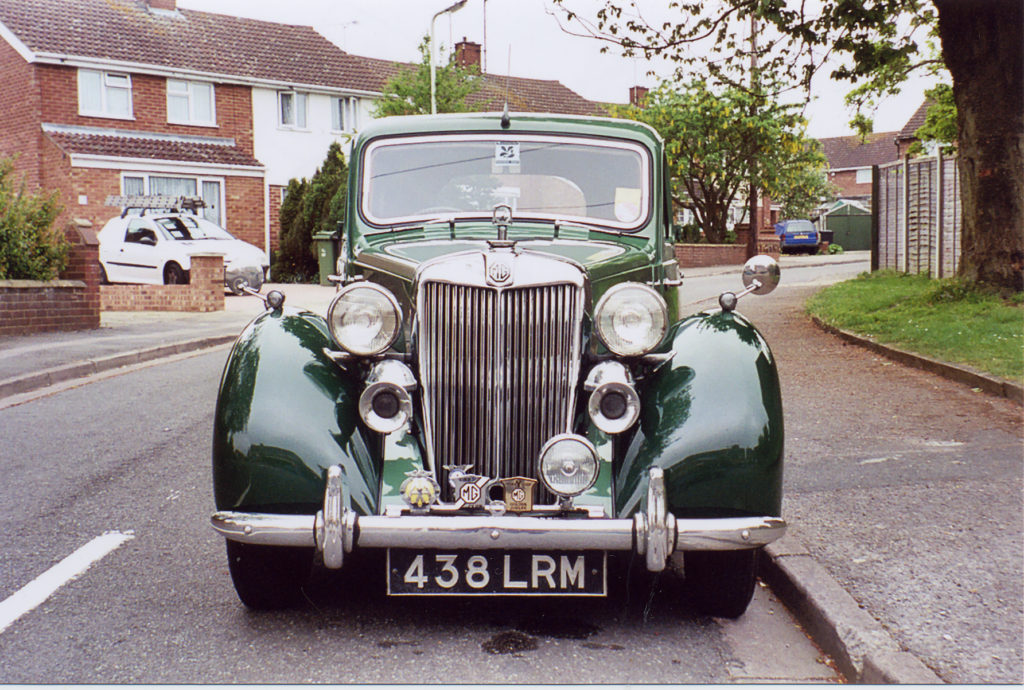
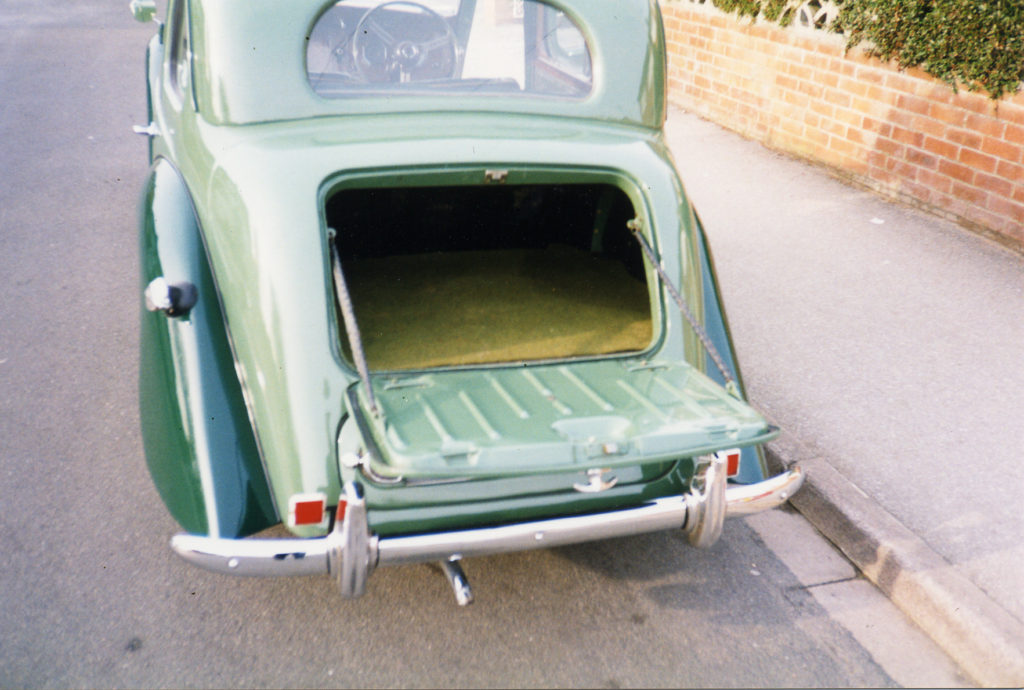
Engine/Transmission
If you are going to look at a restoration job, the engine is going to need a full rebuild, as is the gearbox, brakes, suspension, steering and rear axle. Gearboxes often only require new bearings and oil seals, rear axles the same, though note that fitted to the TD, TF and YB is the later hypoid type and longer living. (These have the Nuffield axle; the others use the Morris spiral-bevel axle.)
As you will have read all about the cars, you will also know the braking systems differ as well, twin leading shoe on the TD, TF, YB, and single leading shoe on the others. Whilst they all look as if they do come from the 1930’s with their upright styling, the independent front suspension, rack and pinion steering, OHV engine, three synchro gearbox and hydraulic brakes are more late 1950’s. The steering and suspension was later used on the MGA and MGB slightly modified.
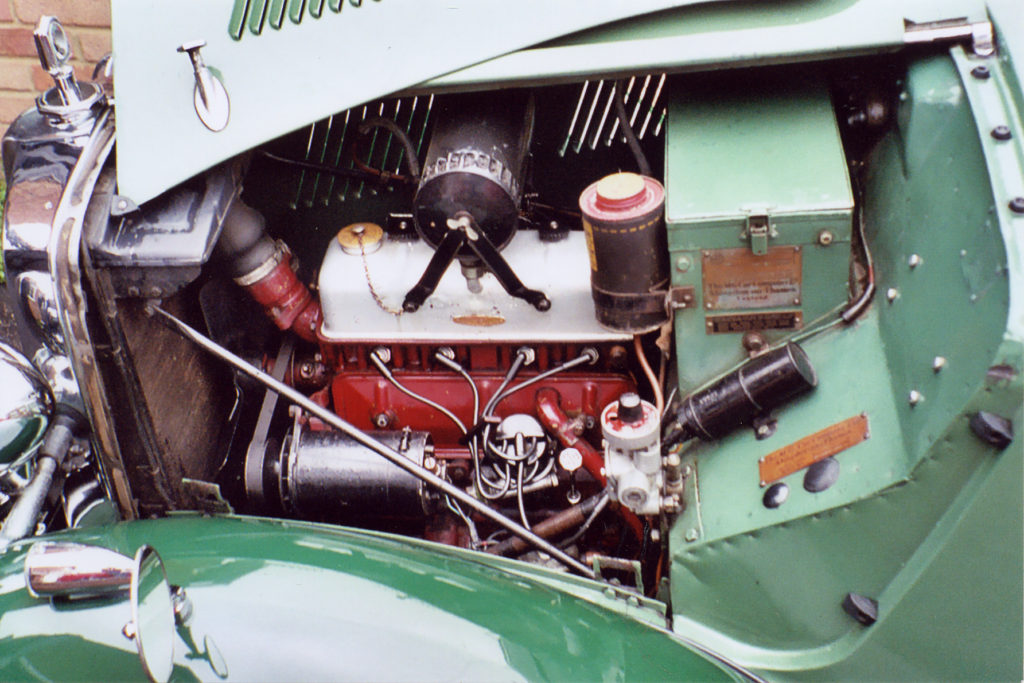
If the car you are going to see is a runner, and advertised as with MOT, tax, and drivable, then you can do quite a bit to check out the running gear. When you arrive have a long chat with its owner. An enthusiast will tell you a great deal about it, any work done, and possibly anything that will need work. Check the engine is not hot, as you will want to see how the car starts from cold. Walk about the car, does it sit level, what are the door gaps like, tyre condition, how clean is the engine, battery condition, (take it’s cover off,) what is the wiring like.
You are getting a general feel for the car, its condition, how it has been kept and serviced. Look underneath at the kingpins, is there clean grease coming out of them? Or are they dry and rusty looking? Take out the engine dip-stick, look at the oil, is it clean or thick black muck? Take off the engine oil filler cap, is it clean inside or is there lots of white ‘mayonnaise’? This white foamy looking stuff tells of a cold running engine, possibly with an internal water leak. Grey oil is an indication of oil mixed with water. Look underneath at the engine sump. If it is all dry and clean that is very suspect and has probably been wiped recently, as these old engines all weep at the timing cover seal and the rear crankshaft seal after a few miles.
The front seal is a bit of asbestos rope, the rear seal a reverse-scroll type. These engines were being built a long time before neoprene spring-loaded lip-seals. Look where the car is usually parked, that will tell you how much the engine/gearbox/rear axle leaks. The gearbox should not leak, but the speedometer drive may seep a little. The rear axle again should not leak. These two units have leather lip-seals. Check the steering rack boots for splits and leaks whilst you are underneath, ( MGA ones fit.)
To assist in finding spares, the YA and YT use TC mechanical bits; the YB uses TD/TF mechanical bits.
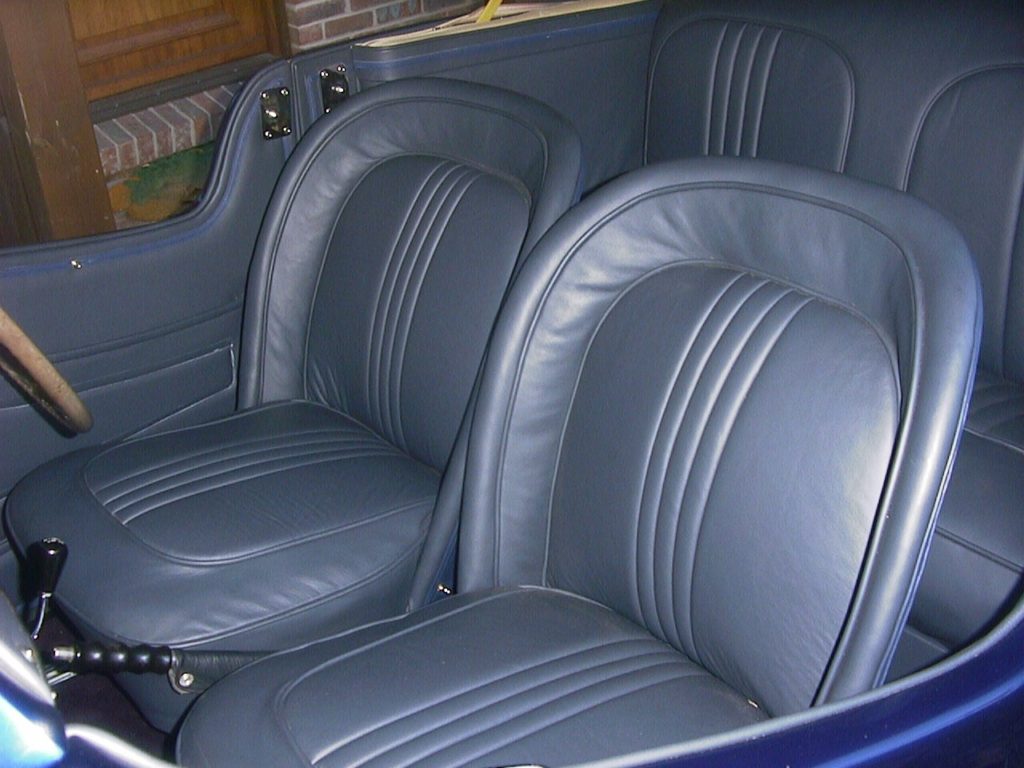
So, now get into the drivers seat, pull out the choke if it’s a cold day, turn on the ignition, and pull the starter button on the ‘Y’s dash board. All XPAG’s fire up instantly as long as you let the fuel pump tick away till the carburettor float chamber is full. The engine should idle over a little fast with the choke out, but look at the ammeter, it should be charging a little after the use of the starter Motor. Glance at the oil pressure gauge which should be creeping up to about 50psi. Once the engine is hot, the oil pressure will be between 15 to 60 psi depending upon the condition of the engine, at idle rpm. But at 30mph it should be firm on 40-50psi or more, engine hot. People worry a lot over oil pressure, and it is one of the easiest ‘pressures’ to bodge by adding washers to the pressure relief valve’s spring.
As long as it is over 40 at 30mph, and at least 10psi at idle, there will not be a great deal wrong. It is the sound the engine makes that is important. It will ‘tick’ a little under the rocker cover, as these engines are very ‘tappety’. Now leave the engine running whilst you listen to it. Wait until the radiator cap is hot, (there is no water temperature gauge on these the ‘Y’, and the system is not pressurized.) This will take a good ten minutes. When you started the engine, a glance in the rear view mirror would have shown you a puff of blue smoke. This will be oil that drained down the inlet valve guides. These engines DO USE OIL, it is quite normal, it is how much that is important. Blue smoke on initial starting up is nothing to worry about; it is residual from the guides.
But blue smoke all the time it is running is a hint of serious wear. To check this out we need to go for a drive. But before this, open the bonnet and look under the water pump. Any water dripping from here shows the water pump is worn out. Look down at the engine breather, the pipe that runs down behind the distributor. There should not be any smoke coming out of this, though a small amount of oil vapour may stain the chassis. Remember, these old engines do not have enclosed breather systems as on modern cars.
Many of them leave a little ‘fingerprint’ of their oil drips when parked, not something people with posh driveways relish. Only a new XPAG engine does not leak, or one with an empty sump! Leakage includes that oil mist that escapes via the breathers. A very oily rocker cover may indicate the engine has worn pistons and rings, as the oil is blown out of the oil filler cap and from the vent pipe to the air silencer. Take a look at all the core plugs you can see, none should be weeping. Any with signs of rust may be about to burst. A rattle at the front of the engine may be a worn timing chain. This needs the sump removing to change it, not an easy task.
Now, having done all of the above, take the car for a run. The clutch should be firm and easy to operate. Glance down at the pedals as you push in the clutch, the brake pedal should NOT move. They run on the same shaft and if not lubricated can become very stiff and interact. This clutch/brake pedal interaction is an MOT failure point. The first gear will need firm engagement as it uses direct cogs, (as is reverse,) and all the gears will seem low.
Unless you are an expert at double-de-clutching never engage first with the car moving. Drive off and change gear as required. Second, third and top will be easy as these have synchromesh. Now go back down the box, but NOT into first. Do this a few times to check the synchromesh is good. If the gears crunch a little, try double-de-clutching as this may improve the change. If you cannot double-de-clutch, now is the time to learn. The gearbox should not be noisy, but sometimes the rear axle can whine. This is more noticeable as you get nearer 60mph.
The gear lever may ‘zzizzz’ at speed, this can be bearing wear inside the box, or just the rear axle sending its whine up the propeller shaft. Sometimes the ‘zizzzz’ can be cured by fitting a gear lever knob with a rubber insert inside. There should not be any loud clonks from the transmission, if there are propeller shaft universal-joints may be worn. The steering should be very good, the rack and pinion and ifs make the car feel very modern. If cross ply tyres are fitted, they will scrub and squeal on fast corners, but if radial ply tyres are fitted the car will run quieter but the steering will be much heavier. That is why the steering wheel is so big, to give you leverage.
The brakes on the TC, YA & YT are good, but those on the TD, TF and YB far better. These last three use twin-leading-shoe front brakes. All of them need a very firm foot on the brake pedal, as there is no servo-assistance. Basically the harder you push, the better they are. The pedal should be firm and only go down half way. Again it should not move the clutch pedal, or hit it. The little MG saloons are pleasant to drive, and in their element between 20 and 55 mph. It will love secondary roads and winding lanes, but fast trunk roads will be hard work and Motorways far too fast.
Upon returning leave the engine idling over for about ten minutes, then blip the throttle. Only a small amount of blue smoke should come out of the exhaust. If there is a lot, the engine needs a rebore, and probably new valve guides. If only the valve guides are worn, ask the vendor if the engine is converted for lead-free petrol. If not, then the fault will be cured once new valves and guides are fitted. Worn pistons are another story, and will mean an expensive engine rebuild.
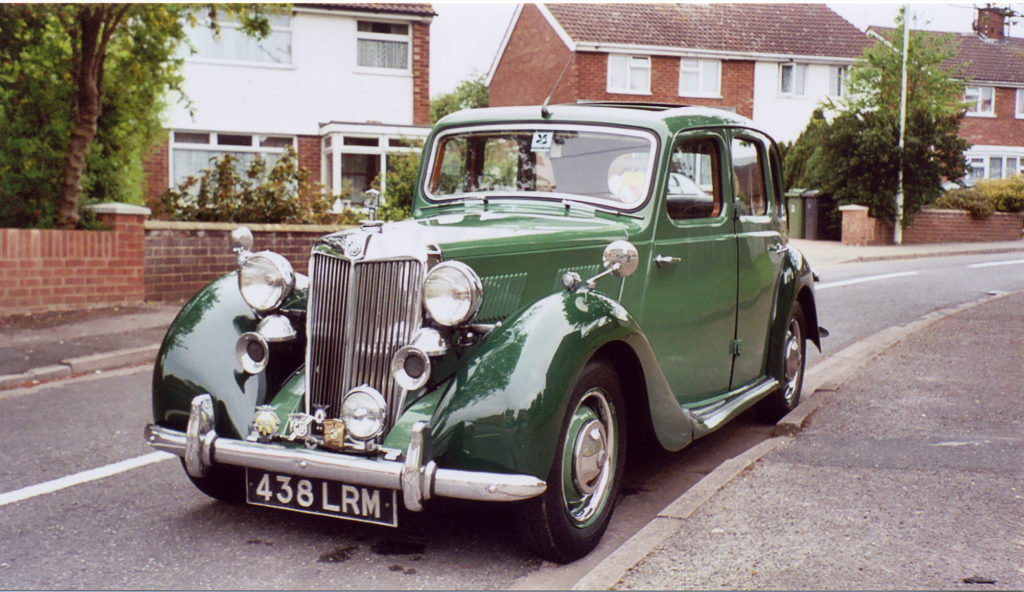
On the drive you had there should not have been any rattling from the engine, and the oil pressure should have remained about 40-50psi when on the move. Now, after the run, with the hot engine idling, look at the oil pressure gauge. If there is virtually no pressure, this will confirm the engine is worn out if there is blue smoke from that exhaust pipe. Check the carburettor now; there should not be any fuel leaks. Look under the car to see if any oil has magically re-appeared where all was dry before the run. Small drips are not too serious and can be lived with.
Undo the radiator cap with a cloth, (it is not pressurized on the Y Type, only on the TF,) and see where the water level is. It should be at the bottom of the filler neck, if out of sight, where has it gone? Look underneath for drips. Inspect the radiator matrix carefully, this is expensive to rebuild. Do this with the engine stopped, or that fan will take your fingers off.
What is your impression? If you like the car now is the time to give other items a firm check over. Jack up each wheel in turn and check for worn wheel bearings and tyre condition. Spin the steering from lock to lock, checking for play in the king pins with a tyre lever under the wheel, lifting the lever as the MOT examiner does to see if there is play in the kingpin. Look at brake hose condition, no cracks, and check brake pipes for corrosion. Look hard at suspension fixings and rear spring hangers for rust.
Underneath grasp the very rear end of the gearbox and shove it up towards the floor hard. It should not move, unless the rear eye-bolt is broken. This eye-bolt holds the gearbox down onto the cross member, and sometimes the casting cracks if the car has been ‘yumped’ over bridges, etc. The action of the car landing forces the prop-shaft forward, and this can hit the gearbox breaking this mounting. Check the U/J’s on the propeller shaft; do they look dry and rusty? Grasp the shaft each side of a joint and try twisting in opposite directions. Any play is bad news. On the YA look at the chassis to rear axle Panhard rod, are the end fixings in good condition. On the YB look hard at the front anti-roll-bar. This differs from the MGA/MGB fixing, and can crack at the lower spring pan mounting points.
The front ‘lever-arm’ damper is part of the upper suspension arm. If its trunion does not get greased regularly, the bolt seizes in the trunion, and twists in the damper arms. Eventually it breaks and you crash. The guide is fine rust dust around the bolt ends, and an awful squeak when depressing the front wings that goes away in the wet. Grasp the car at each bumper corner and bounce it up and down to see if the damper on that corner works. Any leaks from them mean fitting a reconditioned unit, more expense, and a MOT failure if you do not.
The Jackall system probably may work, though many do on the front end only. You can try it out but the rear axle hose is often shredded, and the rear jacks seized up. Use ordinary Motorcycle fork oil in the reservoir. Never trust the Jackall system to go under the car, without axle stands. Many MOT examiners mistake this for the brake master cylinder reservoir. The master cylinder is under a little steel cover under the driver’s side floor. The floors are wood by the way, so be very suspicious of cars fitted with seat belts.
Looking under the car again, at the back of the brake back-plates, look for damp areas where brake fluid has seeped out. If there is any doubt over brake cylinder leaking, take off that wheel and brake drum to check. Early single-leading shoe brakes will need the cylinders re-lining, though the YB uses the later ‘tls’ TD/TF items, and often just a seal replacement kit is needed.
The XPAG engine is a tough unit, but suffers the common faults of early OHV types. That is a high wear rate of the camshaft, cam-followers, rocker arms, rocker shaft and valve guides. The timing chain also rattles if the oil pressure gets low, as it has an oil-pressurized tensioner. The long stroke also means rpm is limited, so long runs at high speeds leads to bore and piston ring wear. The optimum safe piston speed lets you cruise at 50-55mph in a ‘Y’. The engine has shell bearings fitted on the crankshaft, so these can be renewed.
The oil pump is an excellent one, and will be more than capable of feeding any quantity required. It has a pressure relief valve that operates all the time once 50-70psi is reached. This is why putting a couple of washers behind the valves spring will ‘artificially’ boost the oil pressure. The Morris Ten/4 series 3 and Wolseley Ten/40 use the 1140cc engine, up until 1947. This can be bored out to 1250cc if required. More is available on this engine as a free download, if you go to www.mgcc.co.uk/mgenginehistory.rtf
The YT
The YT is the rarest of the Y type models and carries a significant premium over its ‘sibling’ saloons. However, the ‘Strengths & Weaknesses’ of the YA/YB apply equally to the YT. During production 1948 – 1950 all but 3 of the 884 models were exported, either to North America or the old ‘Empire’ countries. Therefore if you require any spare parts that were unique to the YT you will probably have more success finding the proverbial ‘Hen’s Teeth’ or ‘Rocking Horse Manure’. It is therefore essential that when purchasing a YT it should be complete; beware of incomplete ‘Basket cases’.
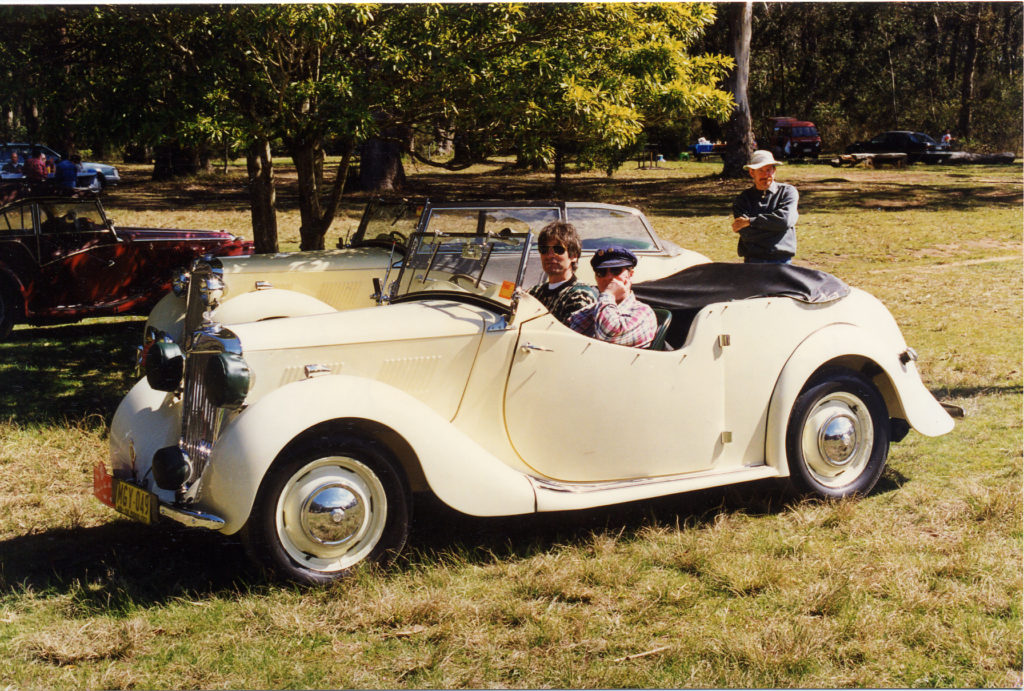
YTs were manufactured in EXR, EXR/K, EXL, EXL/M, and EXU form. In all models the EX denotes ‘EXport’, the later suffixes denote ‘R’ right hand drive, ‘L’ left hand drive and ‘U’ left hand drive specifically for the USA and Canada. EXR/K denotes right hand drive but speedometer calibrated in Kilometres per hour and EXL/K denotes left hand drive but speedometer calibrated in miles per hour. EXR/K and EXL/M models are extremely rare. The EXU models differed from other models in that indicators were fitted as standard, rear indicators were flared into the rear wings and operated from the ‘trafficator switch’ which was taken from the saloon.
As a guide for completeness the following body parts are unique to the YT and no other model:
- The body tub and doors.
- The rear seat base and squab.
- The windscreen and windscreen supports.
- The Hood Frame & Side screens
- The passenger seat fixing brackets and supports
- The air filter expansion chamber – this was also fitted to export Y saloon Models but is also extremely rare.
- Outside Door Handles & Inner Door Pull Handles.
A number of other parts differ from the saloons but as they are fitted to other models that can be found but are still difficult, these include:
- Speedometer & Tachometer – TC & Early TD but different calibration.
- C45 & C39 Dynamos with Tacho Drive – TC & TD
- Bumpers & Overriders – same as YB only.
- Twin Carburettors – same as TC/TD
- Wiper Motor – same as TC/TD
Availability of Spares
In general, there is a good supply of spares for the MG Y Series; in addition to the major players there are many other suppliers. Spares are often cheaper if supplied from the manufacturer rather than the supplier. The ‘Link’ section of the MG Y Register website www.mgytypes.org is a useful source for this.
We hope that you have found this article useful and if you require further information please visit the website or source one of the specialist publications relating to the Y Type: Let There Be Ys – David Lawrence ISBN 0-620-21832-0, Y Type Saloons & Tourers – John Lawson ISBN 0-947981-31-4 or Living with The Y Type as sold by the MGCC Y Register. The MGCC Y Register also produce a number of useful booklets these include: Headlining Fitting, Heat shield installation, wiring indicators, Steering Column electrics etc.

 MG Car Club
MG Car Club